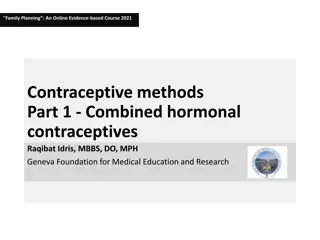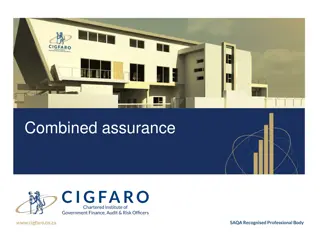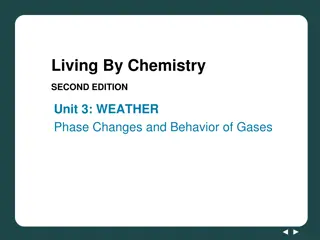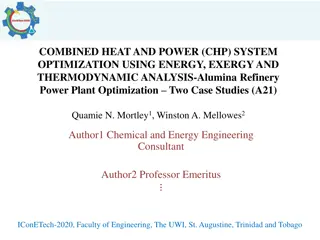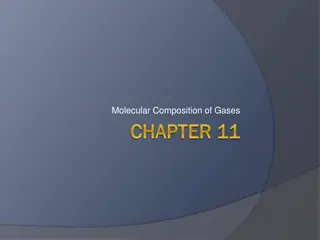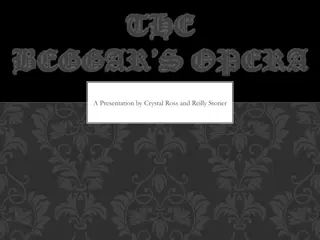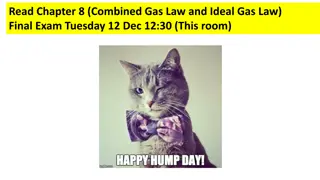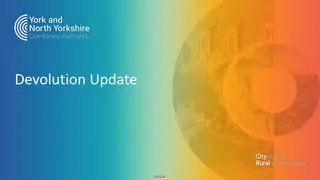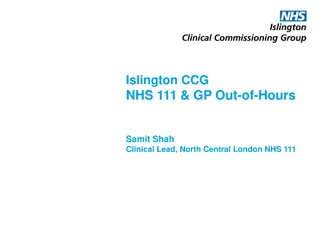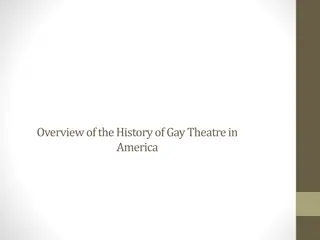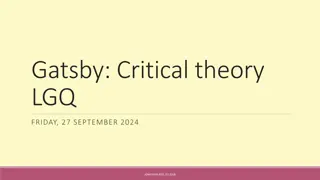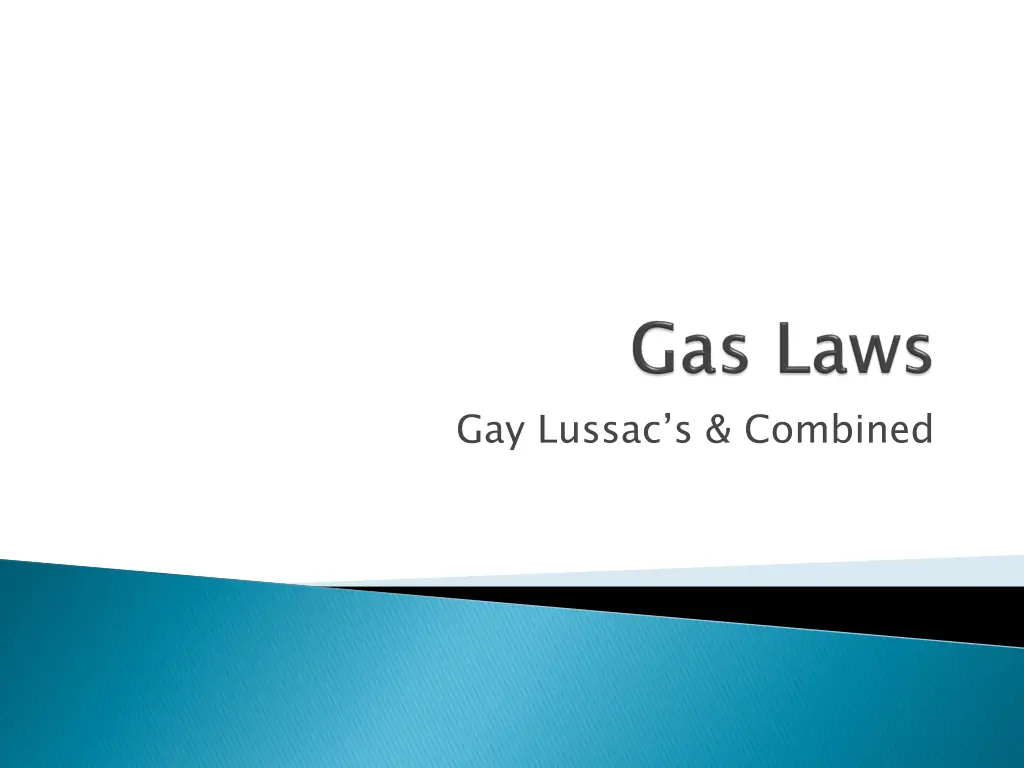
Gas Laws and Pressure Relationship Explained
Explore the relationship between volume, temperature, and pressure in gases through Gay-Lussac's Law, Charles's Law, Boyle's Law, and the Combined Gas Law. Understand how changes in these variables affect gas pressure and volume, with practical examples provided.
Uploaded on | 0 Views
Download Presentation

Please find below an Image/Link to download the presentation.
The content on the website is provided AS IS for your information and personal use only. It may not be sold, licensed, or shared on other websites without obtaining consent from the author. If you encounter any issues during the download, it is possible that the publisher has removed the file from their server.
You are allowed to download the files provided on this website for personal or commercial use, subject to the condition that they are used lawfully. All files are the property of their respective owners.
The content on the website is provided AS IS for your information and personal use only. It may not be sold, licensed, or shared on other websites without obtaining consent from the author.
E N D
Presentation Transcript
If volume is constant, and temperature increases, what happens to pressure? It increases!
P= P 1 2 Volume is constant T T 1 2 * Remember, Temperature MUST be in Kelvin
P V P V = 1 T 1 2 T 2 1 2
Charless Law Pressure is constant Boyle s Law Temperature is constant V= V = P V P V 1 2 1 1 2 2 T T 1 2 Gay-Lussac s Law Volume is constant Combined Law Contains all variables P V P V P= P = 1 T 1 2 T 2 1 2 T T 1 2 1 2
An aerosol can has a pressure of 103 kPa at 25oC. It is thrown into a fire and its temperature increases to 928oC. What will its pressure be?
P= P 1 2 T T 1 2 P1 = 103 kPa P2 = ? T1 = 25 oC + 273 = 298 K T2 = 928 oC + 273 = 1201 K 103 kPa P P2 = 415 kPa = 2 298 1201 K K
The volume of a gas-filled balloon is 30.0 L at 313 K and 153 kPa. What would the volume be at STP?
P V P V = 1 T 1 2 T 2 1 2 V1 = 30.0L T1 = 313 K P1 = 153 kPa V2 = ? T2 = 273 K P2 = 101.3 kPa ( )( ) ( )( ) V 153 30 0 . 101 3 . kPa 313 L kPa 273 = 2 K K = 14 7 . . 0 371 V 2 V2 = 39.6 L






